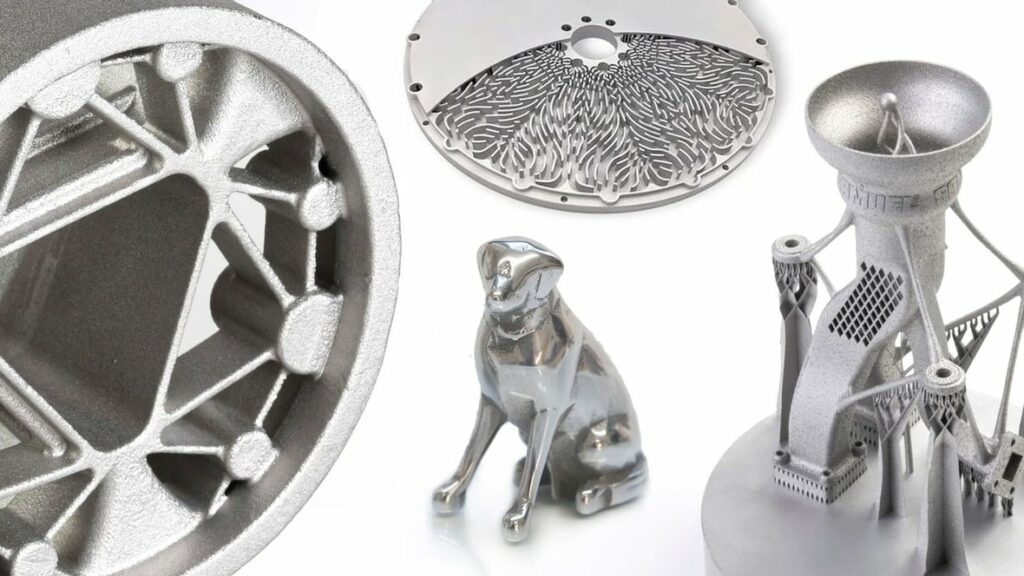Printer
Revolutionize Your 3D Printing with Aluminum Filament
The world of 3D printing has undergone a significant transformation in recent years, with advancements in technology pushing the industry to new heights. One such development that has captured the attention of many is the use of aluminum filament as a printing material.
Revolutionizing the way 3D printing is done, aluminum filament is pushing the boundaries of what is possible – from creating industrial-grade prototypes to crafting intricate designs with ease. Not only does it offer exceptional durability and strength, but aluminum filament also boasts an eye-catching metallic finish, making it an ideal choice for everything from jewelry and accessories to mechanical parts and more.
But why stop there? With its endless possibilities and unique properties, aluminum filament is truly a game-changer in the world of 3D printing. Whether you’re a newcomer to the field or a seasoned veteran, this material has the potential to take your prints to the next level. So why not dive into the world of aluminum filament and discover the possibilities for yourself?
In this article, we’ll explore everything you need to know about using aluminum filament for 3D printing. From understanding its advantages and challenges to tips on how to optimize your printing process, you’ll walk away with a newfound appreciation for this remarkable material. So buckle up and get ready to revolutionize your 3D printing experience with aluminum filament!
“Aluminum 3d Printing Filament” ~ bbaz
Revolutionize Your 3D Printing with Aluminum Filament
Introduction
What is Aluminum Filament?
Ease of Use
Strength and Durability
Post-Processing Capabilities
Costs
Comparison to Other Filaments
Applications
Conclusion
Revolutionize Your 3D Printing with Aluminum Filament
Thank you for taking the time to read our article on Revolutionizing Your 3D Printing with Aluminum Filament. We hope that you were able to gather some valuable insights on this innovative and game-changing material.
The benefits of using aluminum filament in 3D printing are numerous, including increased durability, strength, and heat resistance. Furthermore, the finished product has a unique metallic finish that will make your designs stand out from the crowd.
If you’re interested in trying out aluminum filament for yourself, we highly recommend doing so. However, please note that there are some considerations to keep in mind before making the switch, such as the need for a specialized nozzle and adjustments to print settings. As always, we recommend doing thorough research and consulting with knowledgeable experts before jumping in.
Thank you again for reading, and we hope that you’ll consider incorporating aluminum filament into your 3D printing projects. The possibilities are truly endless!
Revolutionizing your 3D printing with aluminum filament can be a game changer in the world of 3D printing. Here are some commonly asked questions about aluminum filament:
-
What is aluminum filament?
Aluminum filament is a type of 3D printing filament that is made of metal particles mixed with a thermoplastic binder. It can be used in 3D printers to create objects that have a metallic look and feel.
-
What are the benefits of using aluminum filament?
The main benefit of using aluminum filament is that it allows you to create 3D prints that have a metallic finish. This can be useful for creating objects that need to look like metal or have a high level of detail. Additionally, aluminum filament is stronger than most other types of filaments, making it ideal for creating functional parts that need to withstand stress and wear.
-
What are the drawbacks of using aluminum filament?
One drawback of using aluminum filament is that it can be more expensive than other types of filaments. Additionally, aluminum filament can be more difficult to work with, as it requires higher temperatures and may be more prone to clogging or jamming in your 3D printer.
-
What types of objects can be created with aluminum filament?
Aluminum filament can be used to create a wide range of objects, including jewelry, figurines, and functional parts such as gears or tools.
-
What should I consider before using aluminum filament?
Before using aluminum filament, you should make sure that your 3D printer is capable of printing with this type of filament. You may also need to make adjustments to your printer settings, such as increasing the temperature or slowing down the print speed. Additionally, you should be prepared to invest in a high-quality extruder and nozzle, as these components can have a significant impact on the quality of your prints.

